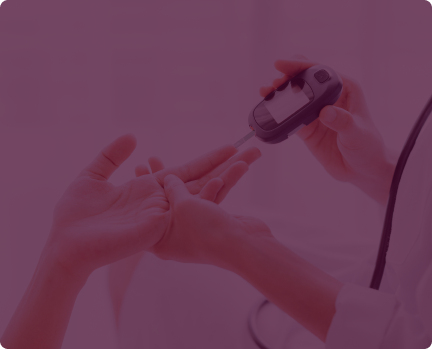





At Kauvery Hospital, we understand that a healthy heart is essential for a vibrant life. Our angioplasty procedure in Bangalore combines cutting-edge technology with personalized care, ensuring a premium treatment experience.
Discover the benefits of angioplasty and how it can make a difference in your heart health.

Angioplasty is a minimally invasive procedure, reducing the need for major surgery and ensuring a quicker recovery.
Effectively opens narrowed or blocked arteries, restoring proper blood flow to the heart muscle.
By addressing blockages, angioplasty reduces the risk of heart attacks and other cardiovascular complications.
Enhances overall cardiovascular health, leading to improved stamina and reduced chest pain.
Various types of angioplasty procedures cater to individual conditions, providing personalised care.
Angioplasty is a minimally invasive procedure designed to open narrowed or blocked blood vessels, mostly arteries supplying blood to your heart muscles. This procedure is a game-changer, restoring proper blood flow and preventing potential heart issues.
At Kauvery, we take pride in our state-of-the-art facilities and expert medical team, providing you with top-notch care during every step of your angioplasty journey.

There's no standard solution when it comes to heart health. Our skilled team offers various types of angioplasty procedures, each tailored to address specific conditions.
Involves inflating a small balloon in the narrowed artery to widen it and improve blood flow.
A small mesh tube (stent) is inserted to keep the artery open, preventing it from narrowing again.
Stents coated with medication to prevent the recurrence of blockages and promote healing.
Involves a rotating device to remove plaque from the artery walls, improving blood flow.
Uses laser technology to vaporize or remove plaque, opening up the narrowed artery.

You may need angioplasty if you're experiencing the following symptoms:

Wondering if angioplasty is the right choice for you? Our team will guide you through the process, ensuring you understand your options and receive the care you deserve. In case you’re having any of these conditions, you may need an angioplasty.

Angioplasty is highly effective in treating CAD by opening blocked arteries and preventing heart attacks.

Alleviates chest pain by improving blood flow to the heart muscles by accessing the artery and widening it to restore blood flow.

Emergency angioplasty can restore blood flow during a heart attack, minimising damage to the heart muscle.

Angioplasty can be used to address blockages in arteries outside the heart, improving circulation.

Angioplasty is employed to treat narrowing of the renal arteries, promoting kidney function.

Reduces the risk of stroke by opening narrowed carotid arteries that supply blood to the brain.

In some cases, angioplasty can be an alternative to traditional bypass surgery.

Our team of skilled interventional cardiologists is dedicated to delivering excellence in cardiovascular care, utilising the latest technologies and techniques to achieve the best possible results for our patients.
At Kauvery Hospital, we're committed to utilizing the latest techniques to ensure your angioplasty experience is as comfortable and effective as possible. Here’s all you need to know about the radial approach.
Opting for the radial approach means accessing your arteries through the wrist rather than the groin. This approach offers several advantages, including:
We're proud to say that we perform approximately 90% of our angioplasties using the radial approach. This statistic underscores our commitment to providing our patients with the safest and most comfortable experience possible during their procedures.
When it comes to angioplasty, precision is key. That's why we employ Intravascular Ultrasound (IVUS) and Optical Coherence Tomography (OCT) to guide our procedures.
IVUS and OCT provide highly detailed, real-time images of your blood vessels from the inside.
This advanced imaging technology allows our interventional cardiologists to accurately assess the location and severity of blockages, ensuring precise treatment planning.
By utilising IVUS and OCT guidance, we can achieve unparalleled accuracy during angioplasty procedures.
This precision ultimately leads to optimal results for our patients, with reduced risk of complications and improved long-term outcomes.
Understanding the severity of blockages is crucial in determining the appropriate course of action. That's where Fractional Flow Reserve (FFR) and Instantaneous Wave-Free Ratio (IFR) come into play.
FFR and IFR are sophisticated tools that allow us to evaluate the hemodynamic significance of borderline blockages.
By measuring blood flow and pressure within the coronary arteries, we can determine whether intervention is necessary or if the blockage can be safely managed with medical therapy alone.
One of the primary benefits of FFR and IFR is their ability to help us avoid unnecessary procedures.
By accurately identifying which blockages require intervention, we can minimise the risk of overtreatment and ensure that each patient receives the most appropriate care tailored to their individual needs.
Our team of skilled interventional cardiologists is dedicated to delivering excellence in cardiovascular care, utilising the latest technologies and techniques to achieve the best possible results for our patients.
Our team of skilled interventional cardiologists is dedicated to delivering excellence in cardiovascular care, utilising the latest technologies and techniques to achieve the best possible results for our patients.
At Kauvery Hospital, we're committed to utilizing the latest techniques to ensure your angioplasty experience is as comfortable and effective as possible. Here’s all you need to know about the radial approach.
Opting for the radial approach means accessing your arteries through the wrist rather than the groin. This approach offers several advantages, including:
We're proud to say that we perform approximately 90% of our angioplasties using the radial approach. This statistic underscores our commitment to providing our patients with the safest and most comfortable experience possible during their procedures.
When it comes to angioplasty, precision is key. That's why we employ Intravascular Ultrasound (IVUS) and Optical Coherence Tomography (OCT) to guide our procedures.
IVUS and OCT provide highly detailed, real-time images of your blood vessels from the inside.
This advanced imaging technology allows our interventional cardiologists to accurately assess the location and severity of blockages, ensuring precise treatment planning.
By utilizing IVUS and OCT guidance, we can achieve unparalleled accuracy during angioplasty procedures.
This precision ultimately leads to optimal results for our patients, with reduced risk of complications and improved long-term outcomes.
Understanding the severity of blockages is crucial in determining the appropriate course of action. That's where Fractional Flow Reserve (FFR) and Instantaneous Wave-Free Ratio (IFR) come into play.
FFR and IFR are sophisticated tools that allow us to evaluate the hemodynamic significance of borderline blockages.
By measuring blood flow and pressure within the coronary arteries, we can determine whether intervention is necessary or if the blockage can be safely managed with medical therapy alone.
One of the primary benefits of FFR and IFR is their ability to help us avoid unnecessary procedures.
By accurately identifying which blockages require intervention, we can minimize the risk of overtreatment and ensure that each patient receives the most appropriate care tailored to their individual needs.
At Kauvery Hospital, we prioritise patient safety, comfort, and optimal outcomes in every angioplasty procedure we perform.
Our team of skilled interventional cardiologists is dedicated to delivering excellence in cardiovascular care, utilising the latest technologies and techniques to achieve the best possible results for our patients.
After undergoing angioplasty, it's essential to take proactive steps to minimize the risk of further cardiovascular issues. Comprehensive risk factor management, focusing on dietary and lifestyle factors, plays a crucial role in ensuring long-term heart health.

Heart-Healthy Eating

Limit Sodium Intake

Monitor Cholesterol Levels

Control Blood Sugar

Regular Exercise

Quit Smoking

Manage Stress

Maintain a Healthy Weight

Regular Medical Check-Ups
Our experienced cardiologists are dedicated to your well-being. Your heart is in capable and compassionate hands with our team.
What is Angioplasty?
I have been visiting Dr. Krishna Shaw since my first delivery and now the second one. Extremly satisfied with her treatment. she listens to all our problems and suggests the course of action patiently.
All the doctors and staff is very good. Special thanks to Mr. Nagendra (patient care) who has taken care a lot.
I was admitted at Kauvery hospital. Everything is best here. The service , food , facilities, bedding , rooms , OT and most importantly dr Dhyaneshwar. I had a surgery and everything was world class